Grooming & care
How to look after your leather saddle ?
21 November 2022
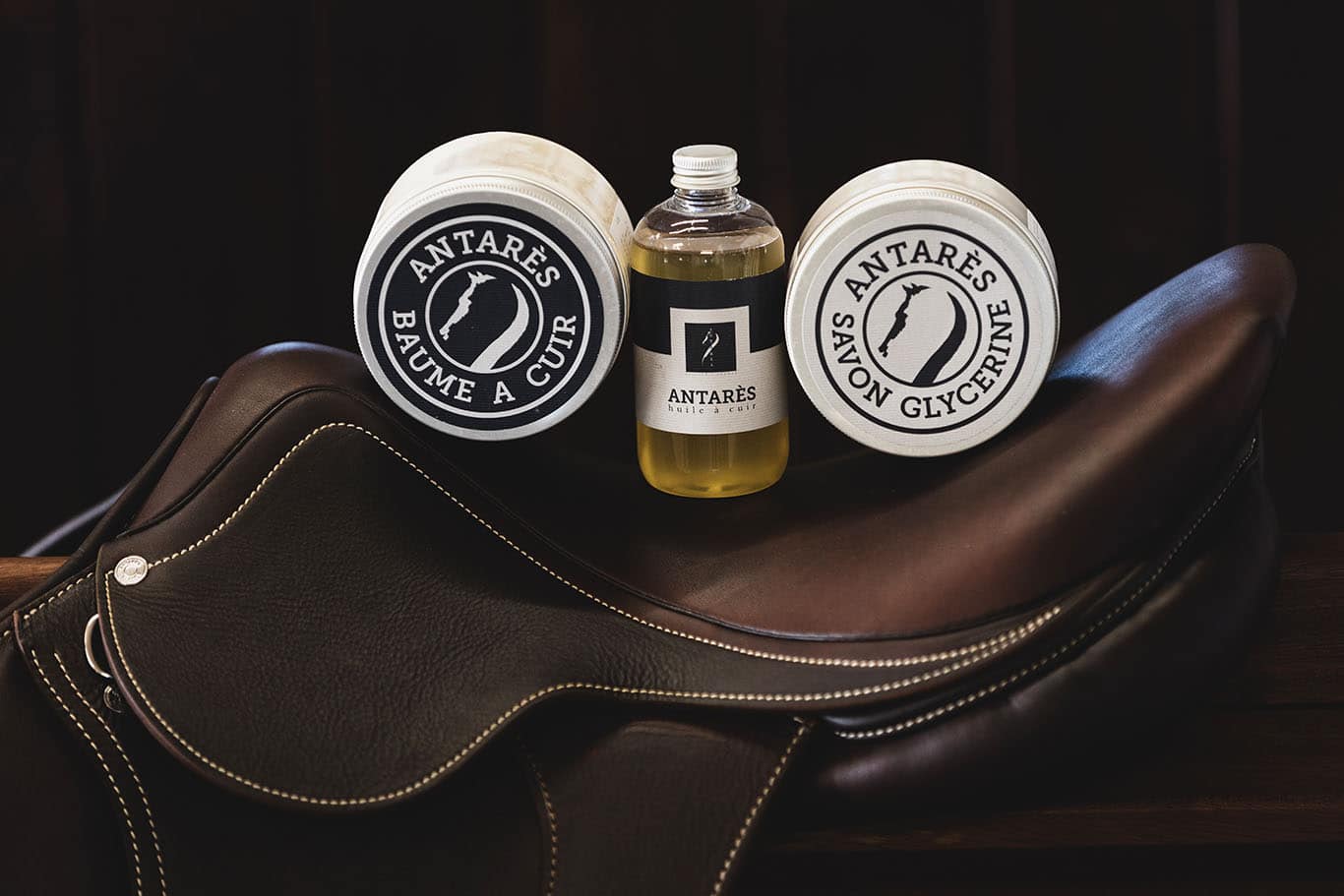
Grooming & care
21 November 2022

Looking after your leather saddle is vital to give you years of riding but do you really know why you should do it? Leather, the raw material making up your saddle, is an organic substance, so it’s a living thing. One of leather’s many features is that it breathes. That’s what helps it to be tough and long-lasting but you still have to look after your leather saddle properly with the right products. This keeps your saddle supple, comfortable and sturdy. So, here’s all our tips and advice on keeping your saddle looking as good as new!
Your saddle must be regularly maintained so that it keeps all the beneficial properties of leather.
If you don’t do this properly cracks may appear in the leather which can end up tearing.
Also, riding is an outdoor sport practised in sometimes challenging conditions. Mud, grit, dust, as well as your horse’s sweat can all harm your saddle leather. A build-up of dirt on a poorly maintained saddle can also injure your horse.
So, you should clean your saddle regularly and feed the leather with the right products.
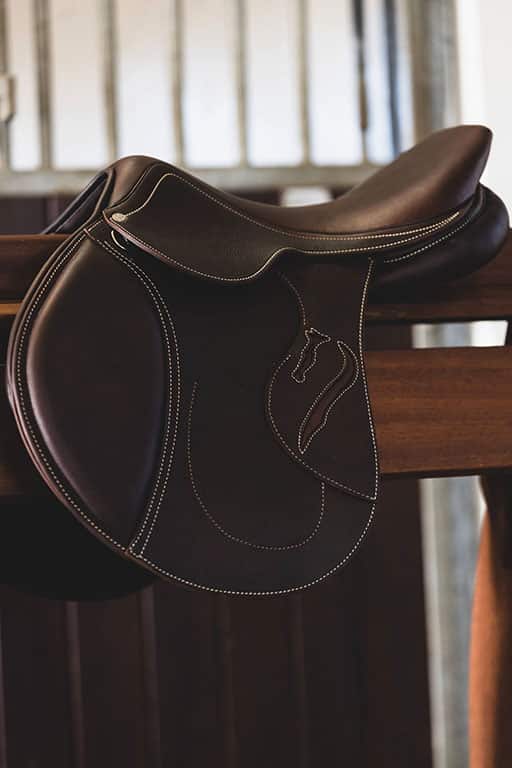
We carefully apply a generous coat of oil to all our leather saddles at our workshops in Saintes before we ship them to you. So, when your parcel arrives you don’t have to do a thing apart from enjoying your saddle! Wait at least a year before you apply a new coat of oil.
To keep your leather saddle in tip-top condition, you should:
– clean it regularly,
– lubricate it occasionally.
Clean your saddle after every ride. This first step gets rid of any dust and dirt. If you don’t wipe down your saddle, dirt could gradually build up on the leather. It’s better to clean too much that too little provided you use the right products designed for the leather on your saddle!
The soap that we’ve developed for the leather on our saddles has many hydrating properties. As well as cleaning the leather, it also helps it to retain its natural suppleness and flexibility.
Using a damp sponge, apply the soap directly to the saddle and softly rub it in without pressing too hard then rinse your sponge once you’re finished to keep it nice and clean.
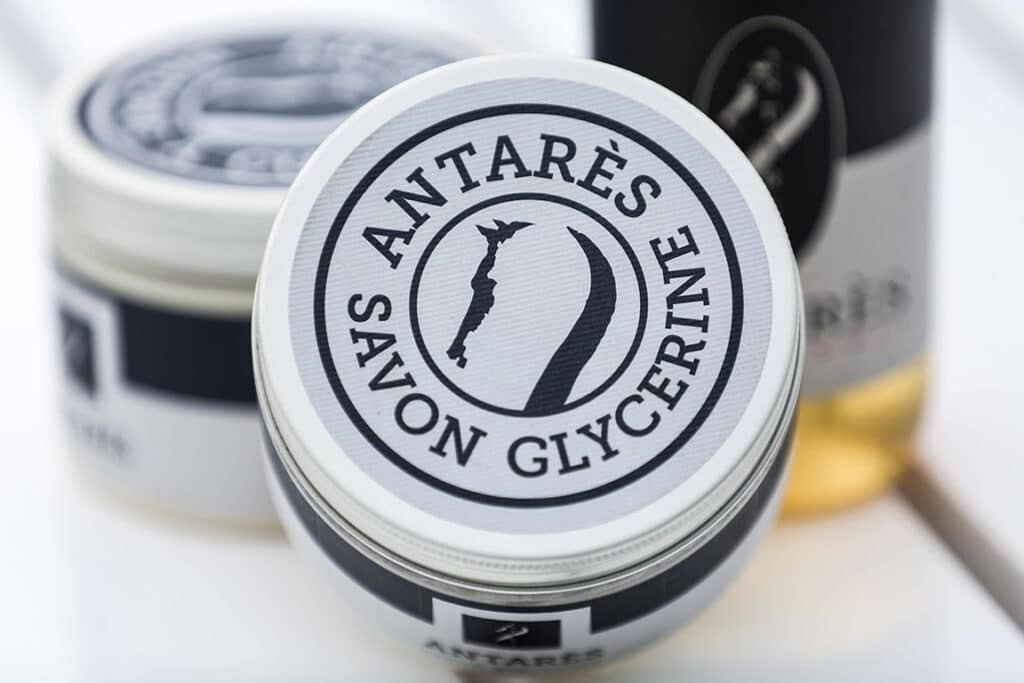
If the dirt on your leather saddle is really ground in, use a soft bristle toothbrush with our soap. The toothbrush helps remove the dirt and clean those really hard-to-reach areas on your saddle.
We also recommend you use a leather conditioner from time to time once you’ve given your saddle a thorough wipe down. How often depends on how much you use your saddle. If you ride daily, you should apply the conditioner once or twice a month. It is best to adapt how often you apply the conditioner according to heavier or lighter use.
Use a sponge or clean tissue to spread out the conditioner on your clean and dry saddle.
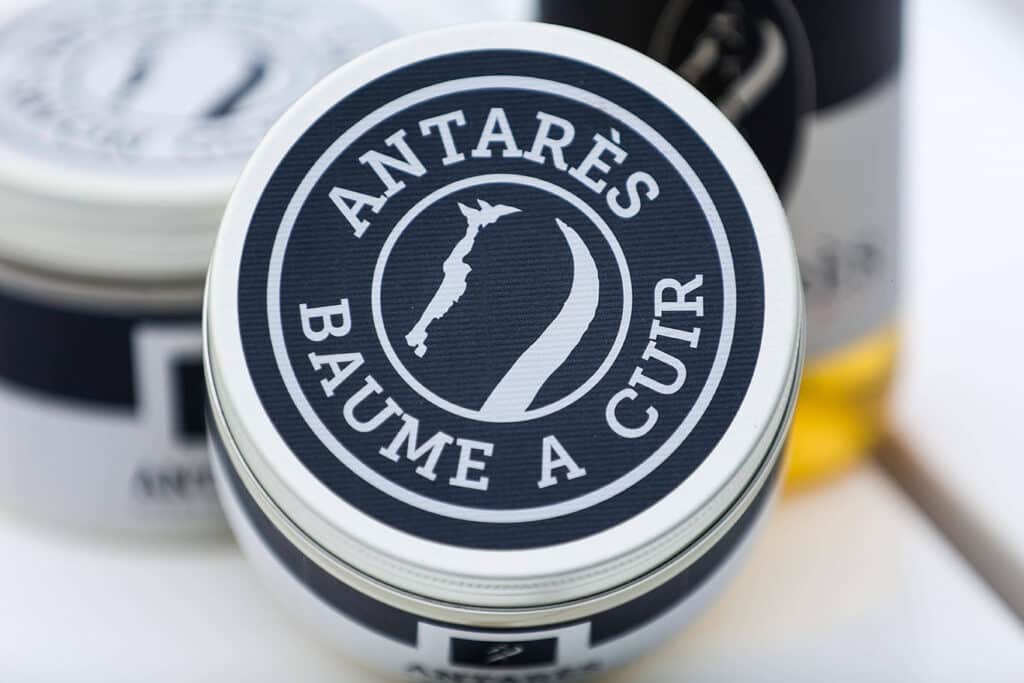
Oil feeds the leather and is vital to keep it supple and flexible. That said, you should use it sparingly. Over-oiling can harm your saddle’s properties by making the leather stretch and cause the dye to seep.
Remember, you don’t have to oil your saddle for the first year of its life. After that, just apply oil once or twice a year based on how often you ride.
Use a paintbrush to apply just the right amount over all your saddle. Be careful not to over-oil as this will cause the leather to slacken.
We’ve developed our own Antarès leather care products so that you can look after your saddle with minimum effort. Did you know that not all leather care products are actually suitable for your saddle? That’s why if you use other products, it’s really important to check they are designed for your leather saddle. Soap, conditioner or oil should be aniline leather-friendly.
Aniline is a finish that enhances the natural look of the leather. Any product that isn’t aniline-friendly will damage your saddle leather. Our entire leather care product range is your guarantee that leather is treasured and properly cared for.
If you use other products that we don’t stock, please read the manufacturer’s recommendations carefully. Better still, try them out first on a less obvious part of your saddle, wait 24-hours and check the result. This way, you can see if the product is ok or not.
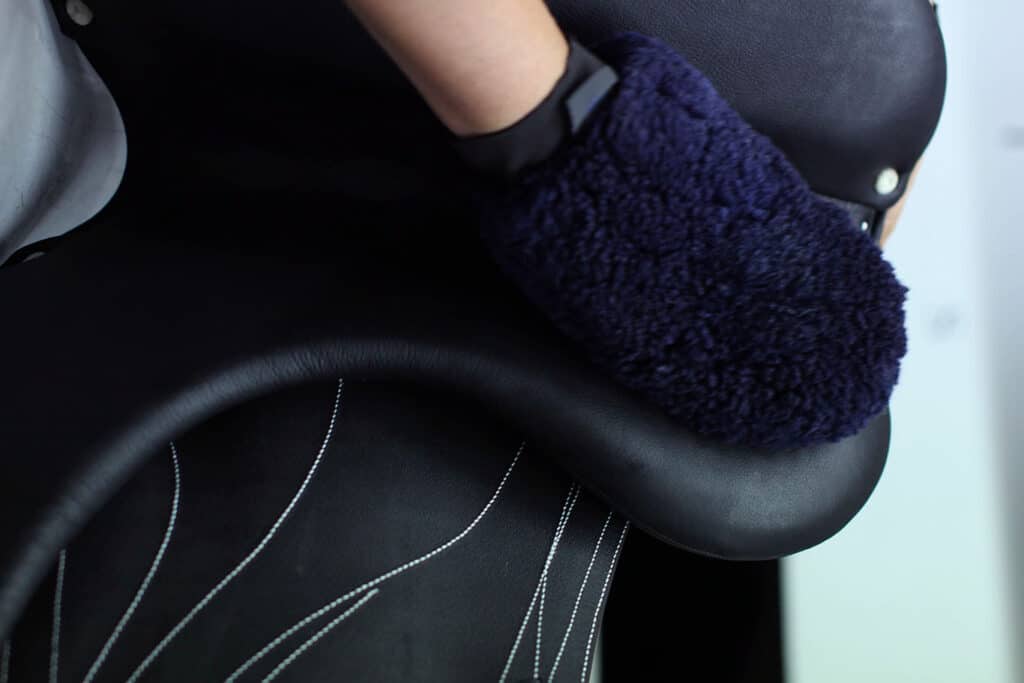
Be careful where you store your saddle. Don’t leave it in damp places. The more your saddle is exposed to dampness and moisture, the more we recommend you wipe it down with our soap. Applying a coat of our leather conditioner will help it cope with both.
Don’t leave your saddle in direct sunlight. Even if it’s wet, leave your saddle to dry in the fresh air away from all sources of heat.
We always recommend carefully oiling your leather tack but if you realise you’ve applied too much and the leather has absorbed all it can, rinse your saddle with hot water, apply soap and rinse it again in clean water. Then leave it to dry for 24 hours and apply some conditioner.
If your leather has not been properly maintained, it can crack. If this happens, clean the leather thoroughly and apply some oil to hydrate it.
Do you want to breathe new life into an old, long forgotten leather saddle? Run some water over it and carefully brush it with a soft bristle brush to remove any stains as much as possible. Leave it to dry in the fresh air for at least 24-hours, away from direct sunlight. Once dry, apply oil to soften the leather then maintain it regularly thereafter.